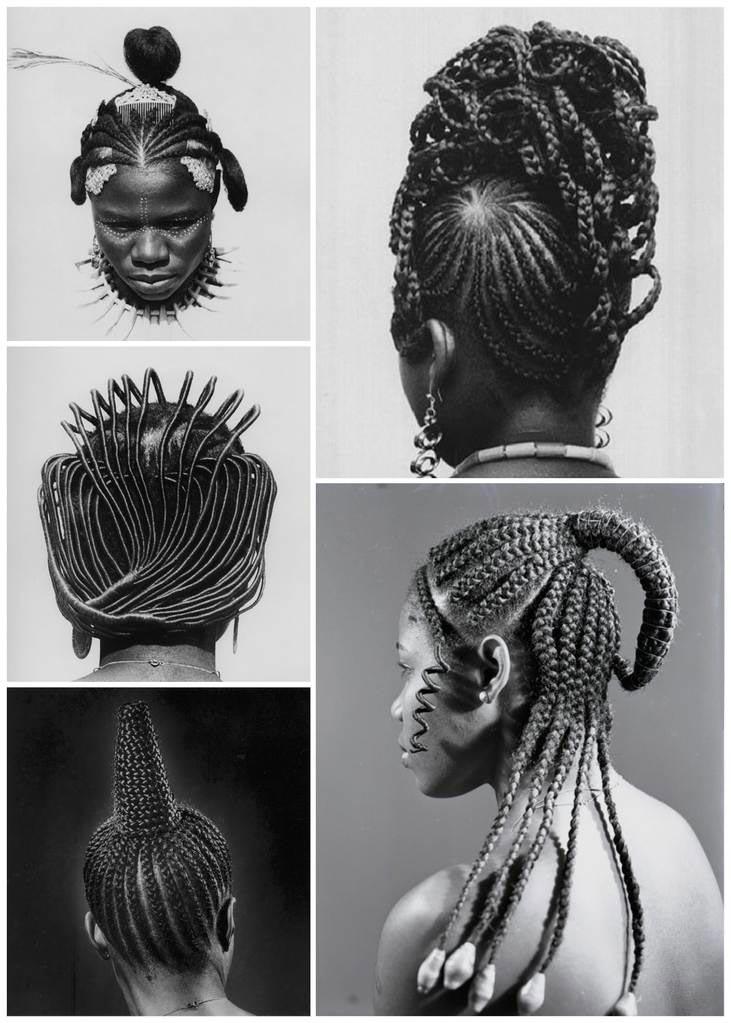From kinky to loose flowing curls, locks, braids and twists, black people hairstyles have always been unique and are usually known for their complexities and creativity. In the early 15th century, and in most West African countries hair braiding were used as a means of communication and they also represented the societies of the citizens, from the clans they came from, their roles, tribes, marital status and the societal status and hierarchy in which they held. Royal members usually wore more elaborate hairstyles as a symbol of their royalty and in some parts of Africa, hair was said to have spiritual significance and as a means to communicate with the deities. Hair was also a means for women to gather around and socialize as it still is with modern day saloons.
During the time when Africans were kidnapped with cruelty and sold as slaves, they had their hair shaved; claiming it was a form of hygiene but they erased their African culture, the uniqueness of their ethnicity, traditions which gave them identities, leaving them anonymous when they arrived to the new world. Although not all African slaves would keep their hair cut, so they braided them in tight cornrows to appear neat and tidy.
Cornrows were used to transfer and create maps to leave the plantation of their captors. Braids were used as a tool of resistance and were evident across the South America. Slaves had no privilege of writing materials, so they braided their hair into intricate patterns that made maps, codes and signals that they used as tools to escape from their slaveholders.
In the time of slavery in Columbia, hair braiding was used as a means of communication among the slaves, they had braiding messages of freedom when they wanted to escape they would braid hairstyles that were called departes, it had a thick, tight braids, braided closely to the scalp and tied into buns on the top and they had another style that had curved braids and would represent the roads they would use as an escape route and they hid things like gold and seeds in their braids that would help them survive when they escape. Also rice seeds were hidden in the braided hair of women before their middle passage journey, so that they could feed their children.
In the 1800, there was a stereotype between good hair and bad hair established in their country by white racist. This made black women see kinky as bad hair and straight flowing hair as good hair and they tried to straighten their hair with dangerous chemicals that could damage their hair or harm their scalp. Black people round the world are now more accepting of their natural hair and protective hairstyle that have emerged over the years and there are videos, blog posts, articles that help black people know how to take care of their natural hair and their different hair types.
There are still stereotypes surrounding black people hair, such as seeing locks as unprofessional or untidy, or having to depict the image of being in a gang or giving bad vibes, seeing natural or braided hair as means of resistance from the black people community. There are still some places that black people hairstyle are not allowed and are not accepted; which makes it hard for black people to accept their hair natural hair the way it is and think there should be a certain way they have to wear their hair to be accepted by these people and in certain places.
Our hair goes beyond being pop culture and trend, our hair gives us an identity connecting us with our roots and the struggles for liberty that our ancestors fought for, black people hair is a symbol of strength and freedom.
So whether it’s an afro halo, finger braids, cornrows, twists, and curls, we should keep embracing our identities as black people showcasing the beauty of our culture and what we represent as a community and the creativity of our diverse roots. We should keep on showing the strength that we possess, so carry your hair like a crown, a representation of the freedom struggles of our ancestors.

